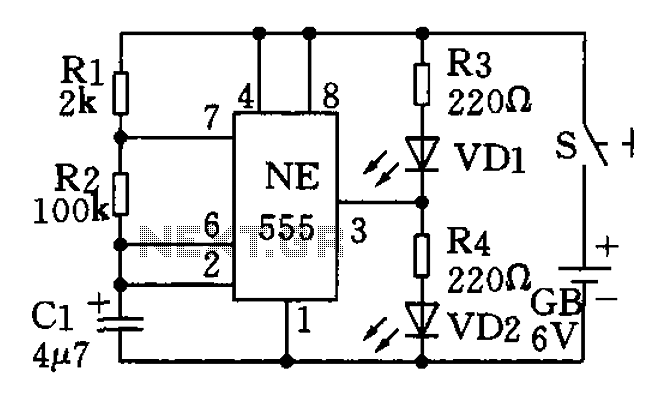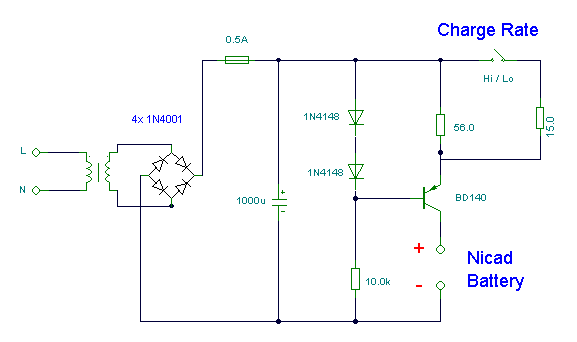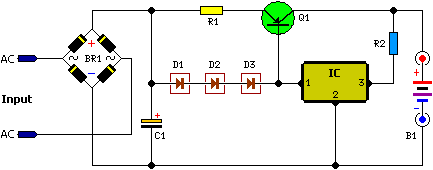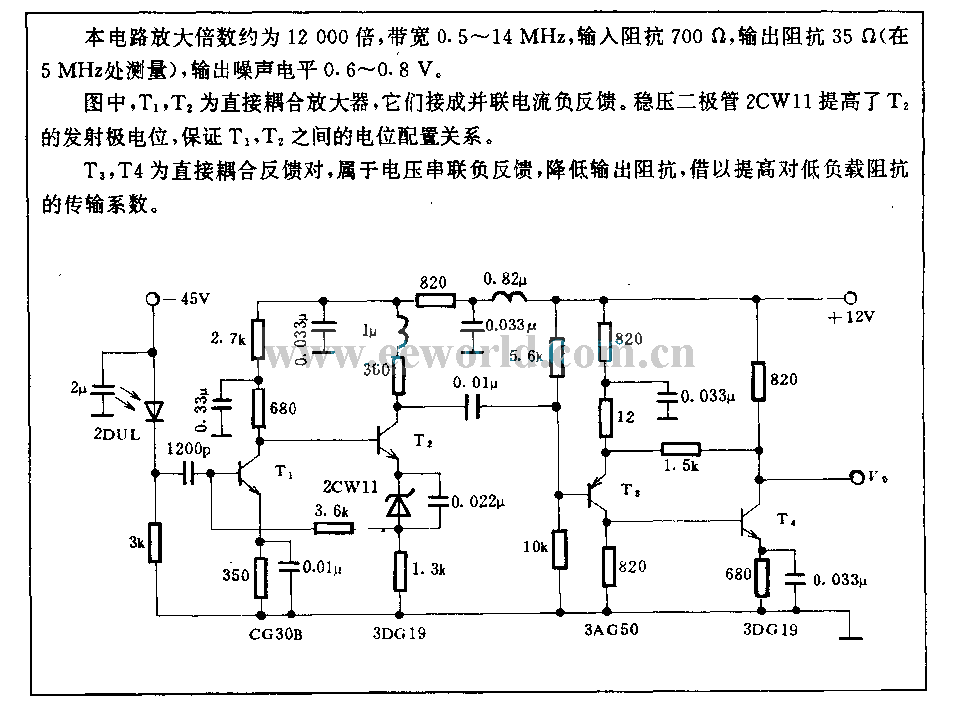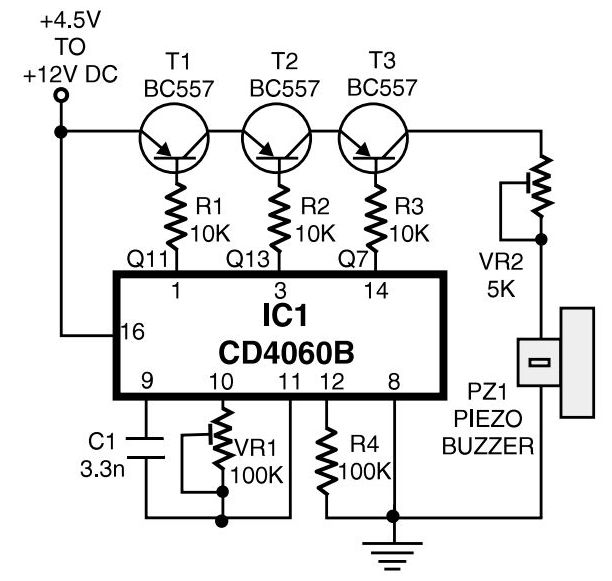
VHF-band FM Circuit of Variable Capacitance Diode
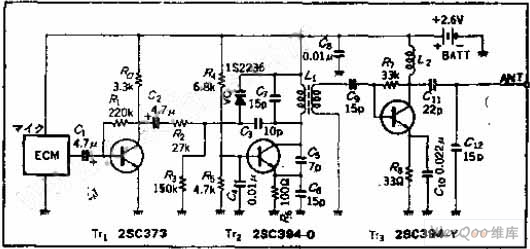
The circuit functions as a frequency modulation (FM) transmitter that operates within the 76 to 90 MHz FM radio band, commonly referred to as a wireless microphone. It receives signals through an FM radio receiver. The circuit is capable of transmitting signals wirelessly, even when a microphone is not used, by inputting low-frequency signals. The transmission distance can exceed 30 meters.
This FM transmitter circuit is designed for versatility, allowing it to function effectively within a range of 76 to 90 MHz, which is commonly utilized for FM broadcasting. The core component of this circuit is the frequency modulator, which modulates the input audio signal onto a carrier wave within the specified frequency range.
The transmitter typically includes several key components: an audio input stage, a modulator, an oscillator, and an RF amplifier. The audio input stage can accept signals from various sources, including microphones or other low-frequency audio devices. This stage may include a preamplifier to boost the audio signal before modulation.
The modulator is responsible for varying the frequency of the carrier wave in accordance with the amplitude of the input audio signal, creating the frequency-modulated signal. This is often achieved using a varactor diode or a transistor configured for modulation.
The oscillator generates a stable carrier frequency, which is essential for consistent transmission quality. It may utilize a crystal oscillator for precision or a simple LC circuit for cost-effectiveness.
The RF amplifier amplifies the modulated signal to ensure it can be transmitted over a distance. The output stage may include an antenna designed to radiate the signal effectively, allowing for a transmission range that can exceed 30 meters under optimal conditions.
Power supply considerations are also vital for the circuit. A regulated power supply is recommended to maintain consistent operation of the transmitter components. The circuit may also include filtering to minimize harmonic distortion and ensure compliance with regulatory standards for radio frequency emissions.
Overall, this FM transmitter circuit is a practical solution for wireless audio transmission, suitable for applications such as public speaking, performances, and other scenarios where mobility and freedom from cables are advantageous.Circuit`s Functions The frequency modulation FM transmitter which can be used in 76~90MHZ FM radio band, usually also it is called wireless microphone.It adopts signals via FM radio receiver.The signals can be transmitted in wireless means if we don`t use the microphone but input low frequency signals.The transmitting distance can reach over 30 mete.. 🔗 External reference
This FM transmitter circuit is designed for versatility, allowing it to function effectively within a range of 76 to 90 MHz, which is commonly utilized for FM broadcasting. The core component of this circuit is the frequency modulator, which modulates the input audio signal onto a carrier wave within the specified frequency range.
The transmitter typically includes several key components: an audio input stage, a modulator, an oscillator, and an RF amplifier. The audio input stage can accept signals from various sources, including microphones or other low-frequency audio devices. This stage may include a preamplifier to boost the audio signal before modulation.
The modulator is responsible for varying the frequency of the carrier wave in accordance with the amplitude of the input audio signal, creating the frequency-modulated signal. This is often achieved using a varactor diode or a transistor configured for modulation.
The oscillator generates a stable carrier frequency, which is essential for consistent transmission quality. It may utilize a crystal oscillator for precision or a simple LC circuit for cost-effectiveness.
The RF amplifier amplifies the modulated signal to ensure it can be transmitted over a distance. The output stage may include an antenna designed to radiate the signal effectively, allowing for a transmission range that can exceed 30 meters under optimal conditions.
Power supply considerations are also vital for the circuit. A regulated power supply is recommended to maintain consistent operation of the transmitter components. The circuit may also include filtering to minimize harmonic distortion and ensure compliance with regulatory standards for radio frequency emissions.
Overall, this FM transmitter circuit is a practical solution for wireless audio transmission, suitable for applications such as public speaking, performances, and other scenarios where mobility and freedom from cables are advantageous.Circuit`s Functions The frequency modulation FM transmitter which can be used in 76~90MHZ FM radio band, usually also it is called wireless microphone.It adopts signals via FM radio receiver.The signals can be transmitted in wireless means if we don`t use the microphone but input low frequency signals.The transmitting distance can reach over 30 mete.. 🔗 External reference
